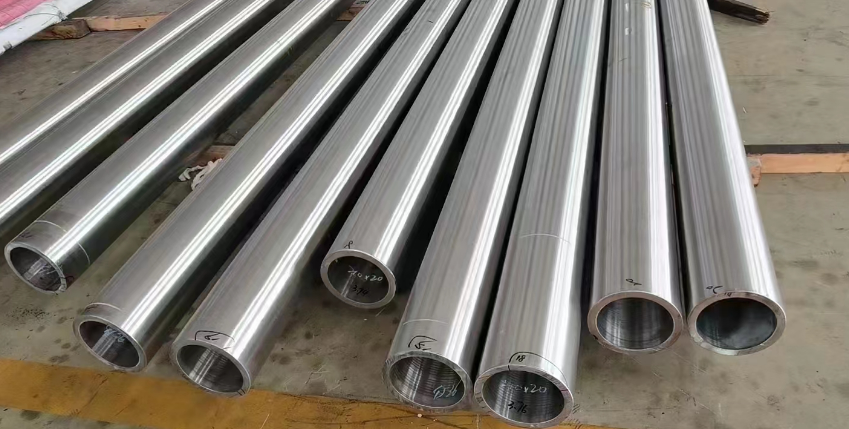In the world of stainless steel, two grades often come under the radar for their unique properties and applications: Stainless Steel 431 and Stainless Steel 430. Both grades belong to the ferritic family of stainless steels, which are characterized by their high chromium content and moderate corrosion resistance. However, despite their similarities, there are several key differences between these two grades. So, Stainless Steel 431 vs 430 – what’s the difference? In this article, we’ll try to answer that question in detail.

Stainless Steel 431 vs 430 – What’s the Difference?
Stainless Steel 431 vs 430 – 1. Composition
The primary difference between Stainless Steel 431 and 430 lies in their composition. Both grades are primarily composed of iron with added chromium, but the specific alloying elements and their percentages vary.
Stainless Steel 430 is a straight chromium ferritic stainless steel with a minimum chromium content of 17%. It is non-hardenable by heat treatment and cannot be strengthened by cold working. It contains trace amounts of carbon and manganese for improved mechanical properties.
On the other hand, Stainless Steel 431 is a modified version of 430, with the addition of titanium and other stabilizing elements. This addition helps to stabilize the steel against sensitization and intergranular corrosion, making it more suitable for welding and other fabrication processes. Titanium forms a stable carbide with carbon, preventing the formation of chromium carbides and maintaining the corrosion resistance of the steel.
Stainless Steel 431 vs 430 – 2. Mechanical Properties
Due to their different compositions, Stainless Steel 431 and 430 exhibit different mechanical properties.
Stainless Steel 430 has good formability and weldability but lower tensile strength and hardness compared to other stainless steel grades. It is generally used in applications where corrosion resistance is the primary concern, rather than mechanical strength.
Stainless Steel 431, on the other hand, offers higher tensile strength and hardness due to the stabilizing elements added to its composition. This makes it more suitable for applications that require both corrosion resistance and mechanical strength.
Corrosion Resistance
Both Stainless Steel 431 and 430 exhibit good corrosion resistance in most environments. However, their resistance to specific types of corrosion may vary.
Stainless Steel 430 is resistant to oxidation and scaling up to 870°C (1600°F). It also offers good resistance to nitric acid and other oxidizing acids. However, it is susceptible to corrosion in chloride-containing environments, such as seawater or saltwater.
Stainless Steel 431, with its stabilized composition, offers improved resistance to sensitization and intergranular corrosion. This makes it more suitable for use in welding and other fabrication processes, where the steel may be exposed to heat or other conditions that could affect its corrosion resistance.
Stainless Steel 431 vs 430 – 3. Applications
The different mechanical properties and corrosion resistance of Stainless Steel 431 and 430 make them suitable for different applications.
Stainless Steel 430 is commonly used in automotive exhaust systems, appliances, and other components that require good corrosion resistance but not necessarily high mechanical strength. It is also used in some architectural applications, such as roofing and siding, due to its resistance to oxidation and scaling.
Stainless Steel 431, on the other hand, is typically used in applications that require both corrosion resistance and higher mechanical strength. It is commonly found in automotive components, such as exhaust manifolds and heat exchangers, as well as in industrial equipment and chemical processing equipment.
Conclusion
In summary, the primary difference between Stainless Steel 431 vs 430 lies in their composition, mechanical properties, and end-use applications.
Stainless Steel 430 is a straight chromium ferritic stainless steel with good corrosion resistance but lower mechanical strength, suitable for applications where corrosion resistance is the primary concern. On the other hand, Stainless Steel 431 is a stabilized version of 430, offering improved resistance to sensitization and intergranular corrosion, as well as higher mechanical strength, making it more suitable for applications that require both corrosion resistance and mechanical strength.
Thank you for reading our reading and we hope it can help you to have a better understanding of the differences between Stainless Steel 431 vs 430. If you are looking for Stainless Steel 431 and 430 suppliers online now, we would advise you to contact Sino Stainless Steel.
As a leading supplier of stainless steel products from Shanghai China, Sino Stainless Steel offers customers high-quality stainless steel pipes, stainless steel strips, stainless steel coils, stainless steel plates, stainless steel sheets, stainless steel bars, and stainless steel tubes at an extremely competitive price.
 :+86-13012867759
:+86-13012867759  :export86@sino-stainless-steel.com
:export86@sino-stainless-steel.com